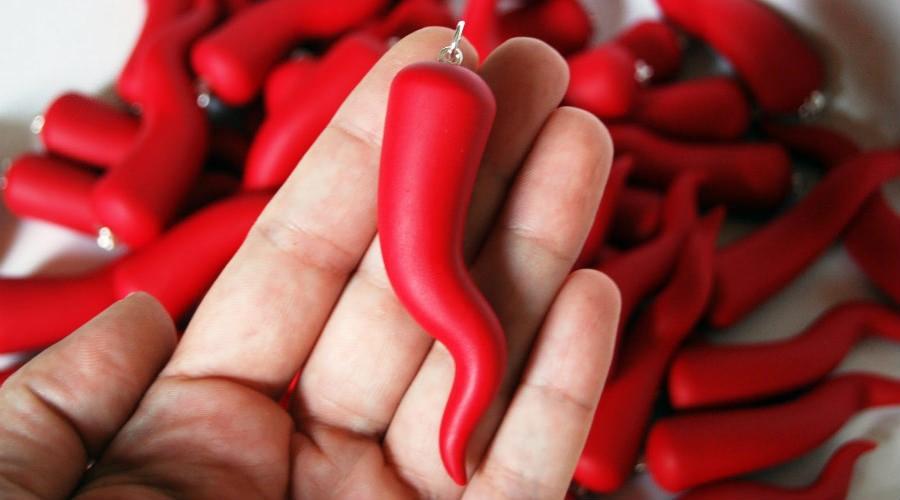How is the myth of "curniciello" born? The history and origins of the traditional lucky Neapolitan horn, still loved by citizens and tourists
Tuosto, vacant, stuorto and cu '' a ponta. Thus the Neapolitan tradition wants the curniciello lucky charm: stiff, hollow, crooked and pointed, because only in this way can he remove the evil eye. Furthermore, the amulet must be received as a gift and never purchased for itself, and must be made by hand so that the positive influences of those who create it accompany the wearer.
Inextricably linked to Naples, the typical red horn however, it has an ancient history that touches different eras and geographical areas.
His amulet powers date back to the beliefs of the Neolithic, when the horns of animals they were considered symbol of physical strength and bearers of good luck. Today we have in fact several depictions of characters who in ancient times wore helmets with horns at important events, such as battles: among them Alexander the Great, Moses and the pharaohs of Egypt.
As history teaches, human culture is the result of stratifications: in Roman times the horn thus assumes an additional symbolic value, given by the similarity with the phallic element. Adored by many Indo-European populations, the penis it represents virility and fertility, able therefore to favor the prosperity of the men and of the earth.
To get to the curniciello Neapolitan as we know it today, we must wait for the Middle Ages. It is in this period that the conviction is spreading in Europe that the amulet is a good omen, and even the Neapolitan artisans begin to produce it. The chosen material is coral, which in itself was considered magical because able to drive away the evil eye from pregnant women. Moreover, the red color was believed to be a good omen for his bond with blood and fire, symbols of power and life.
From the Middle Ages to the present day the lucky charm he met in Naples increasingly successful. There are those who always keep it with them for superstition, who exposes it in their shop, who rubs it before a deal or an exit to the lot, a game that Matilde Serao defined incurable disease of the Neapolitans.
in shops in the historic center, but also in jewelers, today you can find lucky horns of any kind. Citizens and tourists are spoiled for choice among amulets in terracotta, coral, plastic, gold and silver. A variant often exposed is that of the curniciello with a scartellato, a hunchback man, who in the Neapolitan tradition brings good because it is believed touched by God.
The horn is one of the testimonies of the cultural and religious syncretism of the Neapolitan soul, mixture of the sacred and the profane that coexist in every aspect of everyday life, between only apparent contradictions.
Where to buy the Neapolitan lucky horn:
The legendary lucky horn it is now present all over Naples, but the purists prefer to turn to those of the croissants, have made a real school and family tradition.
For this reason, if you are looking for the Neapolitan lucky horn, you can not fail to contact the shopkeepers of San Gregorio Armeno.
For the lazy, or the hungry for luck far from Naples, there is the possibility to buy them comfortably online on ArteInMovimentoDeMaria, with the guarantee of buying the products of the Neapolitan tradition from Neapolitan producers.






